Are you ready to take your tarot reading practice to the next level? If so, then it’s time to start incorporating a tarot journaling ritual into your routine. Tarot journaling is a powerful tool that can enhance your connection with the cards, deepen your understanding of their meanings, and track your progress over time. In this article, we will explore step-by-step how to create a tarot journaling ritual that will help you unlock the full potential of your tarot readings. From setting up your journal and choosing the right deck, to performing the ritual and adding creativity to your practice, we’ll cover everything you need to know to establish a consistent and enriching tarot journaling routine. So grab your favorite tarot deck and get ready to embark on a transformative journey of self-discovery through the art of tarot journaling.
Contents
- The Importance of Tarot Journaling
- Setting Up Your Tarot Journal
- Choosing the Right Tarot Deck
- Preparing for Your Tarot Journaling Ritual
- Performing Your Tarot Journaling Ritual
- Developing Consistency in Your Practice
- Expanding Your Tarot Journaling Practice
- Adding Creativity to Your Tarot Journal
- Building a Connection with the Cards
- Tracking Your Tarot Progress
- Conclusion
-
Frequently Asked Questions
- What is tarot journaling?
- Do I need any special tools to start tarot journaling?
- How often should I journal about my tarot readings?
- Can tarot journaling help me improve my tarot reading skills?
- Can I use any tarot deck for journaling?
- How can tarot journaling help with personal growth?
- Are there any specific tarot spreads I should use for journaling?
- Can tarot journaling be a form of therapy or self-healing?
- Can I include artwork or creative elements in my tarot journal?
- Is tarot journaling only for experienced tarot readers?
- References
The Importance of Tarot Journaling
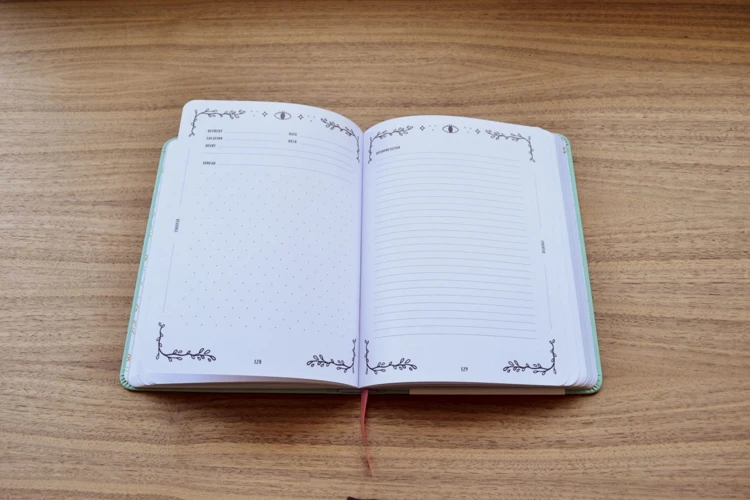
Tarot journaling is not just a mere documentation of your readings; it is an essential practice that can greatly enhance your tarot reading experience. One of the key benefits of tarot journaling is that it allows you to deepen your understanding of the cards. By reflecting on each reading and recording your insights, you can gain valuable insights into the meanings and symbolism of each card. This process of self-reflection helps you develop a deeper connection with the cards and enables you to tap into your intuition more effectively. Additionally, tarot journaling provides a valuable tool for tracking your progress over time. By keeping a record of your readings, you can identify patterns and themes that emerge, allowing you to observe your growth and development as a tarot reader. Tarot journaling also allows you to explore your emotions and gain a deeper understanding of your subconscious mind. By delving into the symbolism of the cards and examining how they relate to your personal experiences, you can uncover hidden truths, release emotional blockages, and gain clarity on various aspects of your life. Tarot journaling can be a powerful self-care practice. It provides a sacred space for self-reflection, introspection, and personal growth. It offers an opportunity to slow down, connect with your inner self, and gain perspective on different areas of your life. So, whether you are a beginner or an experienced tarot reader, incorporating tarot journaling into your practice is a powerful way to enhance your readings and embark on a transformative journey of self-discovery.
Setting Up Your Tarot Journal
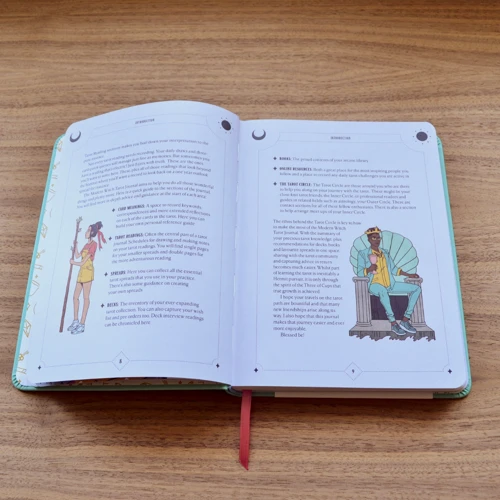
When setting up your tarot journal, it’s important to create a space that is conducive to reflection and creativity. Start by choosing a journal that resonates with you, whether it’s a blank notebook, a dedicated tarot journal, or even a digital journaling app. Consider the size, format, and design that feels comfortable for you to work with. Next, gather essential tools such as pens, pencils, markers, and colored pencils to allow for creative expression. You may also want to include a ruler, eraser, and sticky notes for organization purposes. Additionally, consider incorporating dividers or tabs to separate different sections of your journal. This can help you easily navigate to specific readings, spreads, or personal reflections. Creating a sacred space for your tarot journaling practice is also important. Designate a quiet and peaceful area where you can focus without distractions. You can enhance the ambiance of this space by including items such as candles, crystals, incense, or other objects that hold personal significance for you. These elements can help you create a sense of sacredness and set the intention for your tarot journaling rituals. By setting up your tarot journal with care and intention, you are creating a sacred container for your practice, inviting clarity, insight, and personal growth into your readings. So take the time to gather your tools, create a sacred space, and get ready to embark on a transformative journey of self-discovery through the art of tarot journaling.
Choosing the Right Tarot Deck
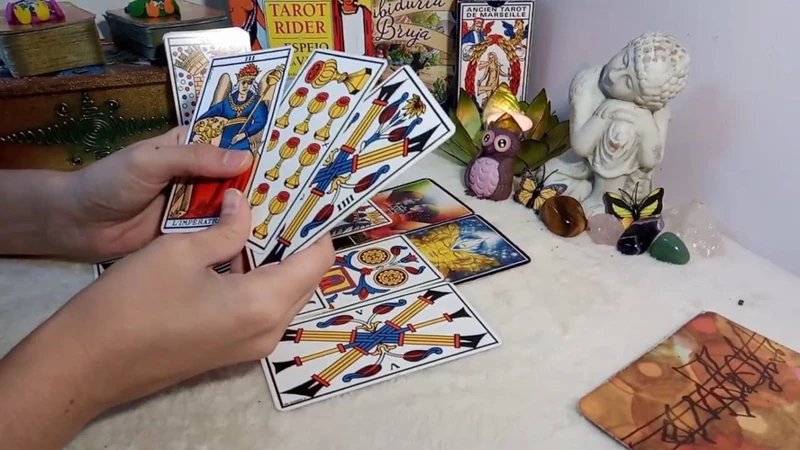
When it comes to tarot journaling, choosing the right tarot deck can greatly impact your overall experience and connection with the cards. It’s important to select a deck that resonates with you on a personal and intuitive level. The imagery, symbolism, and artistic style of the deck should align with your own aesthetic preferences. Whether you prefer a traditional Rider-Waite-Smith deck or are drawn to more contemporary and eclectic designs, finding a deck that speaks to you is crucial. While there are countless options available, taking the time to explore different decks can be an exciting and insightful process. Consider visiting a local metaphysical shop or browsing online to discover a variety of decks. Pay attention to how each deck makes you feel and trust your intuition when making a decision. Some decks may be more suited for specific purposes, such as shadow work or emotional exploration, while others may be more versatile and suitable for any type of reading or journaling practice. Remember that there is no right or wrong choice when it comes to selecting a tarot deck. It’s a deeply personal decision that should be based on your own preferences and connection with the cards. Ultimately, the deck you choose should inspire and ignite your creativity, allowing you to delve deeper into your tarot journaling practice. So, take your time, trust your instincts, and choose a tarot deck that feels like a true extension of yourself.
Preparing for Your Tarot Journaling Ritual

Preparing for your tarot journaling ritual is an important step in creating a focused and intentional practice. First, gather your tools and materials, including your favorite tarot deck, a journal or notebook, and pens or markers. Having these items readily available ensures that you have everything you need to begin your journaling session. Next, create a sacred space that promotes a sense of tranquility and allows you to fully immerse yourself in the ritual. This can be as simple as lighting a candle, burning incense, or arranging crystals or other meaningful objects. Creating a sacred space helps you to cultivate a peaceful and focused mindset, allowing you to connect more deeply with the cards and your intuition. By taking the time to prepare your physical space, you are setting the stage for a meaningful and enriching tarot journaling experience. For additional guidance on how to enhance your tarot journaling practice, you can check out our article on tarot journaling enhancement.
Gathering Your Tools
When it comes to tarot journaling, gathering the right tools is crucial for creating a sacred and intentional space for your practice. Here are some essential tools to consider:
1. Tarot Deck: The first and most important tool is, of course, a tarot deck. Choose a deck that resonates with you and speaks to your intuition. There are countless decks available, each with its own unique symbolism and energy. Whether you prefer a traditional Rider-Waite deck or a modern artistic interpretation, select a deck that inspires you and fuels your connection with the cards.
2. Journal: A dedicated journal is essential for recording your tarot readings and insights. Opt for a journal that has plenty of blank pages, allowing ample space for writing, drawing, and collaging. Consider using a journal with a sturdy cover to protect your precious entries.
3. Pens and Markers: Choose pens or markers that you enjoy using and that won’t bleed through the pages of your journal. Experiment with different colors to add a touch of creativity and vibrancy to your entries.
4. Candles and Incense: Lighting candles or burning incense can create a soothing and sacred ambiance for your tarot journaling ritual. It helps set the mood and signal to your mind and spirit that it’s time for focused reflection and connection.
5. Crystals: Crystals can be used to enhance your energy and set intentions for your tarot journaling practice. Keep crystals that resonate with your intentions, such as amethyst for intuition or clear quartz for clarity, near your journaling space for added support and guidance.
6. Tarot Cloth: Consider using a special cloth as a dedicated space for your tarot readings. It not only protects your cards but also adds a touch of reverence and sacredness to your practice.
As you gather these tools, remember that they are meant to support and enhance your tarot journaling experience. You can also customize your toolset based on your personal preferences and what resonates with you. Creating a space that feels comfortable and aligned with your intentions will help you dive deeper into your tarot readings and connect with your inner wisdom. So gather your tools, find a quiet and inviting space, and embark on a transformative journey of self-discovery through tarot journaling.
Creating a Sacred Space
Creating a sacred space is an essential part of your tarot journaling ritual. It provides a serene and focused environment that enhances your connection with the cards and promotes a sense of mindfulness. Here are some steps to help you create a sacred space for your tarot journaling practice:
1. Choose a quiet and comfortable location: Find a space in your home where you can relax and focus without distractions. It could be a cozy corner, a dedicated altar, or a quiet room where you can create a peaceful atmosphere.
2. Clear the energy: Before you begin your tarot journaling ritual, it’s important to clear the space of any stagnant or negative energy. You can do this by smudging the area with sage or palo santo, using a cleansing spray, or simply visualizing the space being cleansed and purified.
3. Set up meaningful objects: Select a few meaningful objects to place in your sacred space. These could include crystals, candles, incense, or symbols that resonate with your intentions and spiritual practice. These objects serve as reminders of the sacredness of the space and help create a mindful atmosphere.
4. Create a ritual space: Arrange your tarot cards, journal, and any other tools you’ll be using in a way that feels organized and sacred to you. You can lay a beautiful cloth on the table or use a special box to store your tarot cards when not in use. Adding a few flowers or plants can also bring life and freshness to the space.
5. Set the mood: Enhance the atmosphere by playing soothing music, lighting candles, or using aromatherapy. Engaging your senses in this way can help you relax, focus, and enter a meditative state.
Remember, creating a sacred space is not only about the physical elements but also about cultivating a mindset of intention and reverence. Take a few moments before you begin your tarot journaling practice to ground yourself, set your intentions, and connect with your inner self. This sacred space will provide a nurturing environment for your tarot readings and allow you to explore emotions and gain deeper insights into your personal journey. So, take the time to create a sacred space that feels aligned with your practice and enter into the world of tarot journaling with intention and mindfulness.
Performing Your Tarot Journaling Ritual
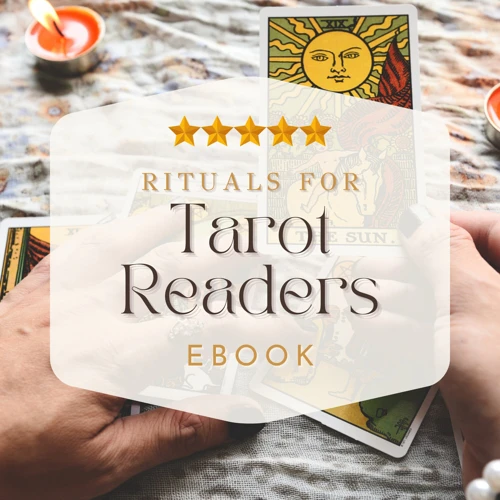
Performing your tarot journaling ritual is a sacred and intentional practice that allows you to delve deeper into the meaning of the cards and gain valuable insights. To begin, gather your tools, including your tarot deck, journal, and pen. Creating a sacred space is important for fostering a sense of tranquility and focus during your ritual. You can do this by lighting candles, burning incense, or playing soothing music. Start by shuffling and pulling cards, allowing your intuition to guide you in selecting the card or cards that resonate with your current energy or question. Record your insights and observations in your journal, noting the symbolism, imagery, and emotions evoked by the cards. Take time to reflect and analyze your readings, exploring any patterns or themes that arise. By incorporating prompts and questions, you can further deepen your understanding of the cards and gain clarity on specific areas of your life. This reflective process allows you to explore emotions and gain a deeper connection with your inner self. Whether you choose to explore emotional aspects of the cards or utilize tarot cards as daily journaling prompts, the key is to approach your tarot journaling ritual with an open mind and a willingness to explore the depths of your intuition and subconscious mind. (source: /explore-emotions-tarot-journaling/)
Shuffling and Pulling Cards
When it comes to tarot journaling, the process of shuffling and pulling cards holds significant importance. Before you begin your tarot journaling ritual, take a moment to connect with your deck and set your intention. Gently shuffle the cards, allowing your energy to flow into the deck. This ensures that the cards are attuned to your energy and will provide accurate guidance. Once you feel ready, choose a specific card or spread for your journaling session. You can use a simple one-card draw to focus on a specific question or topic, or you can opt for a more elaborate spread for a comprehensive exploration. When pulling the cards, try to do so mindfully, paying attention to any specific sensations or emotions that arise. Reflect on the card’s imagery, symbolism, and the emotions it evokes. Take notes on your initial impressions and any intuitive insights that come to you. These initial impressions form the foundation of your journaling practice and will guide your exploration in greater depth. Remember to trust your intuition and allow the cards to speak to you in their unique language. If you feel called to explore further, you can use daily tarot journaling prompts to foster a deeper connection with the cards and uncover hidden messages or lessons. By documenting your process of shuffling and pulling cards, you create a valuable record of your tarot journey and insights that can later be reflected upon and analyzed. So, embrace the art of shuffling and pulling cards as an integral part of your tarot journaling practice, for it sets the stage for meaningful exploration and self-discovery.
Recording Your Insights
Recording your insights during your tarot journaling ritual is a crucial step that allows you to capture the essence of your readings and reflect on their deeper meanings. There are several ways you can document your insights, depending on your personal preference and style. One effective method is to create a journal entry for each reading, where you write down the date, the cards drawn, and any initial thoughts or feelings that arise. You can then proceed to analyze each card individually, exploring their symbolism, traditional meanings, and personal interpretations. It can be helpful to include keywords or phrases that resonate with you, as well as any intuitive impressions or messages received during the reading. Another approach is to use a bullet point format, listing the main points or themes that stand out to you. You can organize these points under each card, creating a concise summary of your insights. Additionally, you may find it beneficial to incorporate tarot journaling prompts to guide your reflection and deepen your understanding of the cards. These prompts can inspire you to explore various aspects of the reading, such as the emotions evoked, the lessons learned, or the potential actions to be taken. They provide a framework for reflection and can lead to valuable insights and personal growth. By recording your insights in a clear and organized manner, you create a comprehensive record of your tarot readings that can be revisited and analyzed in the future. This allows you to track your progress, identify recurring patterns, and gain a deeper understanding of both the cards and yourself. Whether you choose to use a table, list, or a combination of formats, the key is to find a method that works for you and supports your tarot journaling practice. Remember, the act of documenting your insights is a powerful tool for self-reflection and growth, so don’t underestimate the importance of this step in your tarot journey. To further enhance your journaling practice, you can explore using tarot cards for daily journaling prompts, which can provide additional guidance and inspiration for your entries.
Reflecting and Analyzing
Reflecting and analyzing your tarot readings is a crucial step in the tarot journaling process. Once you have recorded your insights and interpretations, it’s time to delve deeper into the meaning behind the cards and their relevance to your life. Take some time to review your notes and reflect on the messages that the cards have conveyed. Pay attention to any patterns or connections that you may observe. This is where you can truly unlock the wisdom and guidance that the tarot has to offer.
During the reflection and analysis phase, consider the symbolism and imagery of the cards. Look for common themes or motifs that may be present in your readings. Notice how these themes relate to your current life circumstances, emotions, or challenges. Ask yourself what message the cards may be trying to convey and how it aligns with your own intuition and inner wisdom.
It can be helpful to ask yourself specific questions during this reflection process. For example, you might inquire into how the cards relate to a particular area of your life, such as relationships, career, or personal growth. By incorporating daily journaling prompts into your practice, you can encourage deeper self-reflection and uncover new insights. These prompts can provide a starting point for further exploration and analysis of your tarot readings.
As you reflect and analyze, remember to trust your intuition. While it can be helpful to consult external resources or interpretations, ultimately, you are the best interpreter of your own tarot readings. Trust the messages that resonate with you and apply them to your personal journey.
By taking the time to reflect and analyze your tarot readings, you can gain a deeper understanding of the messages and lessons that the cards hold. This process not only enhances your tarot journaling practice but also allows you to gain valuable self-awareness and guidance for your life’s path. So, embrace the power of reflection and analysis in your tarot journaling ritual, and watch as it transforms your connection with the cards and your own personal growth.
Developing Consistency in Your Practice

Developing consistency in your tarot journaling practice is crucial to reaping the full benefits of this transformative ritual. First and foremost, establish a regular schedule for your journaling sessions. Set aside dedicated time each day, week, or month to sit down with your tarot deck and journal. This consistent routine will help you build momentum and make tarot journaling a habit. Another way to develop consistency is by utilizing tarot journaling prompts or spreads as a starting point for your practice. These prompts can provide you with a focused theme or question to explore during your journaling sessions, keeping you engaged and inspired. Additionally, create a comfortable and inviting space for your tarot practice. This could be a quiet corner of your home, a cozy cafe, or even a peaceful outdoor setting. Surround yourself with elements that promote relaxation and tranquility, such as candles, crystals, or incense. By intentionally creating a sacred space, you signal to your subconscious mind that it’s time to enter a state of introspection and connection with the cards. Consistency also involves staying committed to your journaling practice, even during times when you may feel uninspired or busy. Use those moments of resistance as an opportunity to push through and rediscover the magic of tarot journaling. Remember, it’s okay to have off days or weeks, but the key is to show up consistently and honor your commitment to your practice. As you develop consistency, you’ll notice a deepening of your tarot readings and a greater sense of self-awareness and personal growth. So, keep showing up, embrace the journey, and let tarot journaling guide you towards a deeper understanding of yourself and the world around you. If you’re looking for daily prompts to support your tarot journaling practice, check out our daily tarot journaling prompts to help enrich your reflective sessions.
Expanding Your Tarot Journaling Practice
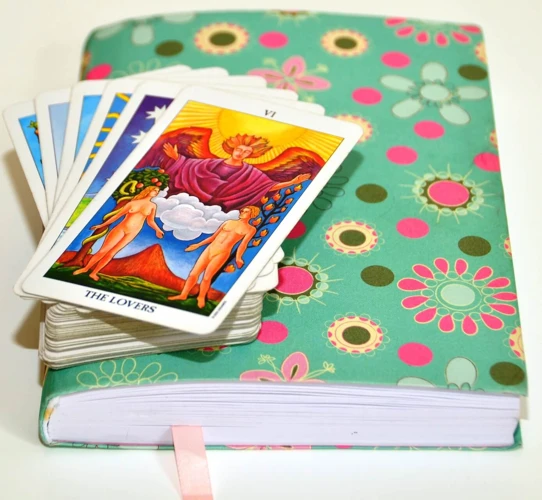
Expanding your tarot journaling practice opens up a world of possibilities for further exploration and growth. One way to expand your practice is by experimenting with different tarot spreads. Tarot spreads provide a structured layout for your cards, guiding you to explore specific aspects of your life or seek answers to particular questions. By incorporating various spreads, such as the Celtic Cross or the Three-Card Spread, you can deepen your understanding of the cards’ meanings and gain more nuanced insights. Another way to expand your practice is by creating personal card meanings. While traditional interpretations are valuable, adding your own interpretations based on your intuition and experiences can bring a unique perspective to your readings. Using prompts and questions is another effective method to enhance your tarot journaling practice. By posing thought-provoking questions or using journaling prompts, you can delve deeper into the cards’ messages and unlock new layers of insight. Through these creative techniques, you can broaden your tarot journaling practice and develop a more personalized and enriching experience.
Exploring Tarot Spreads
Exploring tarot spreads is an exciting and enriching aspect of tarot journaling. Tarot spreads provide a framework for your readings, guiding you on how to lay out and interpret the cards. They offer a structured approach to exploring specific areas of your life or answering particular questions. One popular type of tarot spread is the Celtic Cross spread, which provides insight into the present situation, challenges, and potential outcomes. Another commonly used spread is the Past-Present-Future spread, which offers a timeline perspective on a specific issue.
When exploring tarot spreads in your journal, you can begin by creating a list of different spreads that you want to try. You can find spreads in tarot guidebooks, online resources, or even create your own. Create a table or list in your journal where you can keep track of the different spreads you’ve explored and your experiences with each one. This helps you remember which spreads you found most helpful or insightful for different types of questions or situations.
As you conduct readings using different spreads, make sure to record the layout of the cards in your journal. Drawing a visual representation of the spread or using a table to note down each card’s position can help you visually analyze the relationship between the cards and their meanings. Write down any intuitive insights or interpretations that you gain from each card’s position within the spread.
Exploring tarot spreads in your journal allows you to develop a deeper understanding of how different positions in a spread relate to each other and influence the overall message of the reading. It also helps you become more familiar with the nuances and subtleties of each card in different positions. Over time, you may even discover patterns or themes that emerge when using specific spreads, providing you with a deeper level of insight and guidance.
Remember to experiment with different spreads and have fun with the process. You can also use tarot spreads as prompts for journaling, allowing the cards to inspire you to reflect on different aspects of your life or explore specific themes. Tarot spreads are a valuable tool for tarot journaling, offering structure and guidance while opening up new avenues of self-exploration and personal growth.
Creating Personal Card Meanings
Creating personal card meanings in your tarot journal is a fascinating and empowering practice. While tarot decks come with their own traditional interpretations, it is essential to develop your own personal connection and understanding of the cards. This process involves exploring the symbolism, imagery, and intuitive impressions that each card evokes within you. By delving deeper into the meanings of the cards and recording your personal interpretations, you can create a unique and personal tarot language that resonates with your own experiences and worldview. To start, begin by studying each card individually, paying attention to its symbols, colors, and overall energy. Take note of your initial impressions and any intuitive insights that arise. Ask yourself questions such as: “What emotions does this card evoke?”, “How does it relate to my personal experiences?”, and “What lessons or messages does it hold for me?” Jot down your thoughts, feelings, and unique perspectives on each card in your tarot journal. Over time, you will develop a rich tapestry of personal card meanings that reflect the depth of your connection with the tarot. Remember, these personal interpretations are not fixed or static, but rather, they evolve and grow along with your own spiritual journey. Your personal card meanings may also differ from traditional interpretations, and that is perfectly okay. Trust your intuition, and allow your tarot practice to be a reflection of your authentic self. By creating personal card meanings, you empower yourself to dive deeper into the cards and cultivate a more meaningful and transformative tarot practice.
Using Prompts and Questions
When it comes to tarot journaling, using prompts and questions can be a valuable technique to deepen your exploration of the cards and gain further insights. Prompts and questions serve as guiding tools that help you delve into specific aspects or themes related to your tarot readings. They provide a structure for your journaling practice and can prompt you to consider different perspectives and possibilities.
One effective way to use prompts is to focus on a specific card or card combination. For example, you can ask yourself questions like:
– What emotions does this card evoke in me?
– How does this card relate to a current situation in my life?
– What lessons or messages does this card have for me?
By using prompts, you can tap into your intuition and subconscious mind, allowing for a deeper understanding of the card’s meaning in relation to your personal experiences.
Another way to utilize prompts is to explore different aspects of a tarot spread. For example, you can ask questions like:
– What is the overall theme or message of this spread?
– How do the individual cards in the spread connect with one another?
– What actions or steps can I take based on this spread?
By using prompts, you can analyze the spread from different angles and gain a comprehensive understanding of the messages and guidance it offers.
You can also create your own prompts based on your specific needs and intentions. Think about areas of your life that you want to explore or aspects of yourself that you want to understand better. Use these prompts to guide your journaling practice and gain deeper insights into yourself and the cards.
When using prompts and questions, it can be helpful to write down your initial thoughts and impressions. Allow yourself to freely express your thoughts, emotions, and interpretations without judgment. This creates a space for self-discovery and self-reflection, allowing you to uncover new insights and perspectives.
Incorporating prompts and questions into your tarot journaling practice adds depth and structure to your exploration of the cards. It encourages self-reflection, introspection, and personal growth. So the next time you sit down to journal about your tarot readings, consider using prompts and questions to enhance your experience and gain a deeper understanding of the cards and their messages.
Adding Creativity to Your Tarot Journal
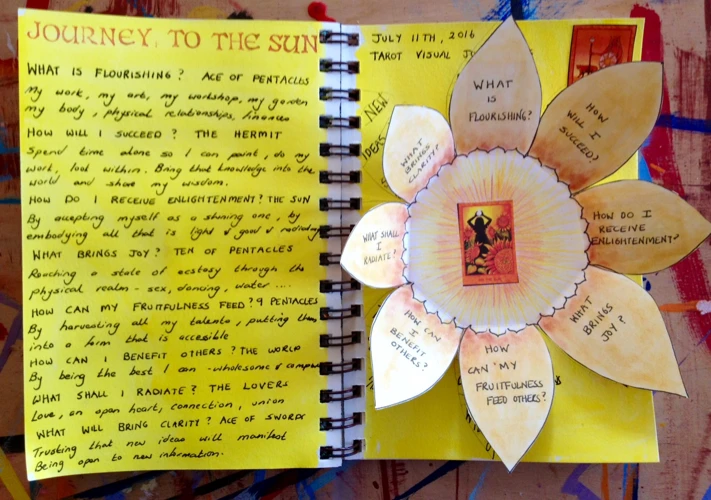
Adding creativity to your tarot journal can bring a whole new dimension to your practice and allow for a deeper exploration of the cards. There are several ways to infuse your journal with creative elements. One option is to incorporate drawing and painting into your journal. By creating visual representations of the cards, you can deepen your connection with their symbolism and engage with them on a different level. Another creative approach is collage and mixed media. You can cut out images, words, and symbols from magazines or printed materials that resonate with the energy of the cards and arrange them in your journal. This can create a visually stimulating and personalized representation of your readings. Writing and poetry are also powerful ways to tap into your creativity. You can write reflective passages, interpret the cards through poetry, or even compose your own personal affirmations based on your interpretations. These written expressions can offer insight, evoke emotions, and provide a unique perspective on your tarot journey. By incorporating creativity into your tarot journal, you not only enhance your visual experience but also tap into your intuition and explore the cards in a more personal and expressive way.
Drawing and Painting
Drawing and painting in your tarot journal can add a whole new dimension to your practice. Not only does this creative expression allow you to visually capture the essence of the cards, but it also helps you to tap into your intuition and connect with the symbolism on a deeper level. One way to incorporate drawing and painting is by creating your own tarot card illustrations. Use your favorite card from the deck as a reference and allow your artistic abilities to bring the card to life on paper. This process allows you to explore your own interpretation of the card’s symbolism and create a personal connection with it. Another option is to use drawing and painting as a way to record your tarot spreads. Instead of simply writing down the card positions, consider sketching a simplified representation of each card in the spread. This visual representation can serve as a quick reference for future readings and add a visual element to your journal pages. Additionally, you can use drawing and painting as a means of self-reflection and exploration. If a specific card or image resonates with you strongly during a reading, spend some time meditating on it and then translate that experience onto paper. Let your creativity flow and allow your intuition to guide your artistic expression. Whether you consider yourself an artist or not, the process of drawing and painting in your tarot journal can be both therapeutic and enlightening. It allows you to explore the visual language of the cards and deepen your connection with their meanings. So grab your art supplies and let your creative juices flow as you bring your tarot journal to life with your own unique and personal artwork.
Collage and Mixed Media
Collage and mixed media are creative techniques that can add a unique and visually appealing element to your tarot journaling practice. These techniques involve the use of various materials and textures to create a multimedia representation of your tarot readings. One way to incorporate collage into your tarot journal is by cutting out images from magazines or printed materials that resonate with the cards you drew. These images can represent the themes, emotions, or symbols depicted in the cards, and by collaging them onto the pages of your journal, you can create a visual representation of your reading. Another approach is to use textured materials such as fabric, ribbon, or tissue paper to add depth and dimension to your journal pages. You can glue these materials onto the pages, creating layers and textures that reflect the energy of the cards and enhance your connection with them. One technique commonly used in mixed media is to combine different art mediums like painting, drawing, and collage. You can experiment with acrylic paints, watercolors, markers, or colored pencils to create backgrounds or highlight certain aspects of the cards. By incorporating mixed media techniques, you can infuse your tarot journal with your own creative expression and make it a truly personalized and visually captivating work of art. So, don’t be afraid to explore the world of collage and mixed media in your tarot journaling practice. Let your creativity flow and allow these techniques to enrich your connection with the cards and deepen your understanding of their messages.
Writing and Poetry
Writing and poetry can be a beautiful and cathartic way to engage with your tarot journaling practice. The act of putting pen to paper allows you to explore and express your thoughts, emotions, and insights in a creative and personal way. One approach is to write stream-of-consciousness journal entries, where you freely express your initial thoughts and feelings about a card or a reading. This can help you access your subconscious mind and tap into intuitive messages that may arise. Another approach is to write poetry inspired by the cards or your readings. Poetry offers a unique opportunity to capture the symbolism, energy, and essence of a card in a concise and artistic manner. You can write haikus, sonnets, or free verse poems that reflect your interpretation and personal connection to the cards. Additionally, writing prompts can be a helpful tool to spark inspiration and deepen your exploration of the cards. Consider using tarot-specific prompts or general writing prompts to guide your journaling practice. For example, you could write about the emotions evoked by a particular card, the lessons it offers, or how it relates to a situation in your life. Another idea is to create dialogues or narratives involving the cards, allowing them to speak through your writing. Writing and poetry bring a unique dimension to your tarot journaling practice, allowing you to engage with the cards on a deeper and more personal level. Experiment with different writing styles, techniques, and formats to find what resonates with you. Whether it’s journaling, poetry, or a combination of both, the act of writing can unlock insights, foster self-expression, and add a creative flair to your tarot journal. Form a habit of regularly writing in your tarot journal, and watch as your connection with the cards deepens and your understanding expands.
Building a Connection with the Cards
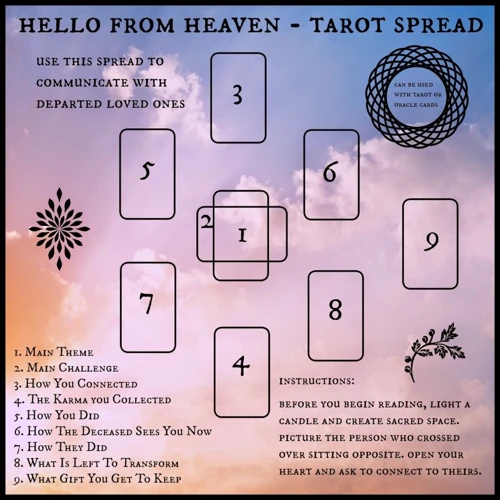
Building a strong connection with the tarot cards is essential for an effective reading practice. One way to deepen this connection is through meditation and visualization. By engaging in regular meditation sessions specifically focused on the cards, you can enter a state of deep relaxation and concentration, allowing you to connect with the energy and symbolism of each card on a deeper level. Another powerful technique is to explore personal symbolism within the cards. Each person may have different associations or interpretations for certain symbols or images in the tarot. By taking the time to reflect on your own personal meanings and connections, you can develop a unique and intimate relationship with the cards. Additionally, incorporating dream analysis into your tarot journaling practice can be insightful. Recording and analyzing the dreams you have involving the tarot cards can provide further guidance and understanding. By exploring various techniques and practices, you can cultivate a profound connection with the tarot deck, enabling you to tap into its wisdom and guidance with greater clarity and intuition.
Meditation and Visualization
Meditation and visualization are powerful techniques that can deepen your connection with the tarot cards and allow you to tap into your intuition on a deeper level. When it comes to tarot journaling, incorporating meditation and visualization practices can enhance your reading experience and provide a more profound understanding of the cards’ messages.
One way to incorporate meditation into your tarot journaling ritual is to begin by finding a quiet and comfortable space where you can sit undisturbed. Close your eyes and take several deep breaths to help relax your mind and body. Once you feel centered, visualize yourself surrounded by a soft, gentle light, creating a calm and peaceful atmosphere.
Now, focus your attention on the specific tarot card or cards you pulled for your reading. Allow your mind to become receptive and open to any images, symbols, or messages that come to you. Pay close attention to any emotions or sensations that arise during this process.
As you meditate on the card’s imagery, try to imagine yourself stepping into the scene depicted on the card. Engage your senses and imagine what it would feel like to touch the objects, hear the sounds, and experience the atmosphere of the card. Allow your intuition to guide you as you explore the card’s message and its relevance to your current situation.
After your meditation, take a moment to reflect on your experience. Record any insights, observations, or emotions that arose during the meditation. Write down any symbols or images that stood out to you and their potential meaning. This process of combining meditation and journaling allows you to deepen your understanding and connection with the tarot cards while providing a space for personal reflection and growth.
By incorporating meditation and visualization techniques into your tarot journaling practice, you create an opportunity to access your subconscious mind and tap into your intuition. This can result in a more profound connection with the cards and a clearer interpretation of their messages. Experiment with different meditation techniques and find what works best for you. Whether it’s guided visualizations, breathing exercises, or mindfulness meditation, the key is to create a calm and receptive state of mind that allows you to explore the depths of the tarot’s wisdom.
Personal Symbolism
Personal symbolism is a fascinating aspect of tarot journaling that allows you to incorporate your own unique meanings and interpretations into your readings. Your tarot deck may have traditional interpretations for each card, but personal symbolism adds an extra layer of depth and connection to your readings. To explore personal symbolism in your tarot journaling practice, you can create a list of symbols or images that hold personal significance for you. These symbols can be objects, animals, colors, or even specific people in your life. As you conduct your tarot readings, pay attention to any symbols that stand out to you or resonate with your intuition. Jot them down in your journal and reflect on their personal meaning to you. For example, if the Empress card reminds you of your nurturing and caring grandmother, you can note that association in your journal and consider how it influences your interpretation of the card. Similarly, if the moon symbolizes emotional intuition for you, you can take note of that symbolism and use it to deepen your understanding of the High Priestess card. Creating a personal symbolism section in your tarot journal allows you to infuse your readings with your own experiences and emotions, making each reading a unique and deeply personal experience. Remember that personal symbolism is subjective and may differ from person to person. The key is to pay attention to your own associations and connections to symbols and incorporate them into your tarot practice.
Dream Analysis
Dream analysis is a fascinating and valuable tool that can be integrated into your tarot journaling practice. When you incorporate dream analysis into your tarot journal, it allows you to tap into the rich symbolism and messages that arise from your dreams. Here are a few steps to help you incorporate dream analysis into your tarot journaling routine:
1. Record your dreams: Start by jotting down your dreams in your tarot journal as soon as you wake up. Include as much detail as possible, including the people, objects, and emotions that appeared in your dream. Use descriptive words to capture the essence of your dream experience.
2. Identify dream symbols: Once you have recorded your dream, review it for any recurring symbols or themes. Highlight these symbols in your journal using bold text or another distinguishing format. These dream symbols will serve as a starting point for your tarot analysis.
3. Connect dream symbols with tarot cards: Take each dream symbol and explore its potential meaning in the context of tarot. Consult a tarot guidebook or trusted online resources to uncover possible interpretations. Cross-reference the symbolism of the dream symbol with the imagery and meanings of relevant tarot cards.
4. Pull tarot cards for further insight: Once you have identified the dream symbols and their associated tarot cards, pull these cards from your tarot deck and place them next to your dream analysis. Observe the symbolism, colors, and imagery of the cards, and reflect on how they relate to your dream experience. Note any intuitive insights or connections that arise.
5. Reflect and analyze: Finally, take time to reflect on the relationship between your dream symbols and the tarot cards. Consider how the dream messages and tarot insights intertwine and offer guidance or insights into your waking life. Use bullet points or a numbered list to organize your thoughts and reflections.
By integrating dream analysis into your tarot journaling practice, you can uncover deep insights, unlock hidden messages, and gain a greater understanding of your subconscious mind. This combination of dream symbolism and tarot wisdom can provide a powerful tool for personal growth and self-discovery. Start exploring the depths of your dreams and the wisdom they hold within your tarot journal today.
Tracking Your Tarot Progress
Tracking your tarot progress is an integral part of your tarot journaling practice. It allows you to observe patterns, themes, and personal growth over time. One way to track your progress is by keeping a record of your readings. You can create a table or a list to log the date, the cards pulled, and any relevant notes or interpretations. This will enable you to review past readings and identify any recurring symbols or themes that may arise. Another aspect of tracking your tarot progress is noting patterns and themes that emerge across multiple readings. By paying attention to common threads or recurring messages, you can gain further insight into specific areas of your life or the energies at play. Additionally, recording personal growth is crucial in tracking your progress. Take note of any personal shifts, newfound understandings, or changes in perspective that occur as a result of your tarot practice. This helps you see how your tarot readings and journaling contribute to your personal development. By consistently tracking your tarot progress, you can gain a deeper understanding of the cards, yourself, and your journey as a tarot reader.
Keeping Track of Readings
Keeping track of your tarot readings is an important aspect of tarot journaling. It allows you to have a record of your readings and provides a valuable resource for future reference and analysis. When recording your readings, include key details such as the date, the deck used, the spread layout, and any significant insights or interpretations you received. This documentation not only helps you keep organized but also enables you to look back and identify patterns, themes, and recurring messages that may have emerged in your readings. By reviewing past readings, you may discover connections and synchronicities that provide deeper insights into your life journey. It’s also helpful to include the specific questions or topics you asked during the reading. This helps you understand the context of the reading and provides clarity when you revisit the notes later. In addition to keeping track of the readings themselves, it can be beneficial to record your initial impressions and feelings before and after each reading. This allows you to gauge your intuition and observe any shifts or changes in your perception as you progress in your tarot journey. Keeping track of your tarot readings in your journal is an invaluable way to monitor your growth, gain a deeper understanding of the cards, and track your evolving relationship with the tarot.
Noting Patterns and Themes
Noting patterns and themes in your tarot journal is a valuable practice that can provide profound insights into your readings. When you consistently record your tarot readings and experiences, you can start to notice recurring patterns and themes that emerge across multiple readings. These patterns can reveal important messages, highlight areas of growth or challenges, and offer guidance in various aspects of your life. To effectively note patterns and themes, carefully review your tarot journal entries and look for common elements such as specific cards that repeatedly appear, card combinations that hold significance, or recurring themes in the interpretations of the cards. Pay attention to any synchronicities or coincidences that arise. By recognizing these patterns, you gain a deeper understanding of the energies at play in your life and can make more informed decisions moving forward. Additionally, noting patterns and themes can help you track your progress as a tarot reader. You may notice shifts in the types of questions you ask or the level of clarity you receive from the cards. This reflection allows you to celebrate your growth and identify areas where you can continue to develop your skills. Noting patterns and themes also helps you see how the tarot reflects the interconnectedness of life. You may discover connections between seemingly unrelated aspects of your life and gain a broader perspective on your experiences. By recognizing these connections, you can develop a greater sense of wholeness and alignment. The practice of noting patterns and themes in your tarot journal is an opportunity for deep reflection and self-discovery. It allows you to see beyond the individual readings and tap into the larger tapestry of your life. So, as you continue your tarot journaling journey, keep a keen eye out for those recurring patterns and themes that hold valuable insights for your personal growth and spiritual development.
Link: /tarot-journaling-enhancement/
Recording Personal Growth
Recording personal growth is a vital aspect of tarot journaling, as it allows you to track and celebrate your progress on your spiritual journey. Through consistent tarot practice and journaling, you can observe how your interpretations, insights, and connections with the cards evolve over time. By documenting your experiences, you can gain a deeper understanding of yourself and your personal growth. One way to record personal growth is by keeping track of the lessons you learn from each reading. Write down any breakthroughs, aha moments, or new insights that arise during your sessions. This not only helps you remember and integrate these lessons into your life but also allows you to reflect on how they have influenced your thoughts, actions, and mindset. Another way to record personal growth is by noting any changes in your interpretations and perceptions of the cards. As you delve deeper into your tarot journey, you may notice shifts in your understanding of card meanings and symbolism. Documenting these changes provides a powerful record of your growth and development as a reader. Additionally, pay attention to any recurring themes or patterns that emerge in your readings. These can be indicators of areas in your life where transformation and growth are occurring. By keeping track of these patterns, you can gain insight into the areas of your life that may need attention or celebrate the progress you have made. At times, personal growth can be subtle and gradual. By consistently recording your observations, however small or significant they may seem, you can build a comprehensive picture of your progress over time. This record can serve as a source of motivation, inspiration, and encouragement during challenging times. Whether you use written entries, charts, or visuals, the key is to create a system that works for you and allows you to easily revisit and reflect on your journey. Through the process of recording personal growth, your tarot journal becomes a treasure trove of wisdom, capturing your evolution as a tarot reader and as an individual.
Conclusion
In conclusion, incorporating a tarot journaling ritual into your tarot reading practice is a transformative and enriching experience. By setting up your tarot journal, choosing the right deck, and creating a sacred space, you lay the foundation for a powerful and connected practice. As you perform your tarot journaling ritual, you shuffle and pull cards, record your insights, and reflect on your readings. This process allows you to deepen your understanding of the cards, track your progress over time, and explore your emotions and personal growth. To expand your tarot journaling practice, you can explore tarot spreads, create personal card meanings, and use prompts and questions to delve deeper into your readings. Adding creativity to your journal with drawing, painting, collage, mixed media, writing, and poetry enhances your personal connection with the cards. Building a connection with the cards is further supported through meditation, visualization, personal symbolism, and dream analysis. Finally, tracking your tarot progress by keeping records of your readings, noting patterns and themes, and recording personal growth allows you to observe your journey as a tarot reader. So, embrace the power of tarot journaling and embark on a lifelong exploration of self-discovery, intuition, and spiritual growth. As you develop consistency in your practice, your tarot journal becomes a sacred space for personal reflection, empowerment, and guidance. Start your tarot journaling ritual today and unlock the transformative potential of the cards.
Frequently Asked Questions
What is tarot journaling?
Tarot journaling is the practice of documenting your tarot readings and personal reflections in a journal. It involves recording the cards pulled, their meanings, and your interpretation of the reading. It serves as a way to deepen your understanding of the cards and track your progress over time.
Do I need any special tools to start tarot journaling?
No, you don’t need any special tools to start tarot journaling. All you need is a tarot deck, a journal or notebook, and a pen or pencil. However, you can also enhance your experience by incorporating additional materials such as colored pens, stickers, or art supplies if desired.
How often should I journal about my tarot readings?
The frequency of your tarot journaling practice is entirely up to you. Some people prefer to journal after every reading, while others choose to journal on a weekly or monthly basis. Find a schedule that works for you and allows you to reflect on your readings and personal insights.
Can tarot journaling help me improve my tarot reading skills?
Absolutely! Tarot journaling is an excellent tool for improving your tarot reading skills. By reviewing your past readings, analyzing your interpretations, and reflecting on your intuitive insights, you can identify patterns, refine your understanding of the cards, and enhance your overall reading accuracy.
Can I use any tarot deck for journaling?
Yes, you can use any tarot deck that resonates with you for journaling. Whether it’s a classic Rider-Waite deck or a more modern deck, the choice is yours. Select a deck that speaks to you on a personal level and allows you to connect with the cards and their meanings.
How can tarot journaling help with personal growth?
Tarot journaling aids in personal growth by providing a space for self-reflection and exploration. It allows you to delve into your emotions, gain insights into your subconscious mind, and identify areas for personal development. By regularly engaging in tarot journaling, you can track your progress, set intentions, and cultivate self-awareness.
Are there any specific tarot spreads I should use for journaling?
While there are no specific tarot spreads you must use for journaling, some spreads can be particularly helpful. For example, a daily draw spread can serve as a simple and effective method for regular reflection and journaling. Experiment with different spreads or create your own to suit your specific needs and intentions.
Can tarot journaling be a form of therapy or self-healing?
Yes, tarot journaling can be a powerful form of therapy and self-healing. Engaging in this practice allows you to explore your emotions, confront challenging situations, and gain insights into your inner world. It can provide a safe and supportive space for self-expression, personal growth, and healing.
Can I include artwork or creative elements in my tarot journal?
Absolutely! Adding artwork, creative elements, and other forms of self-expression to your tarot journal is highly encouraged. Drawing, painting, collage, and even writing poetry can bring a new level of depth to your journaling practice and allow for a more immersive and enjoyable experience.
Is tarot journaling only for experienced tarot readers?
No, tarot journaling is suitable for both beginners and experienced tarot readers alike. It is a flexible and personal practice that can be tailored to your individual needs and level of experience. Whether you are just starting your tarot journey or have been reading for years, tarot journaling can provide immense value and enrichment to your practice.






